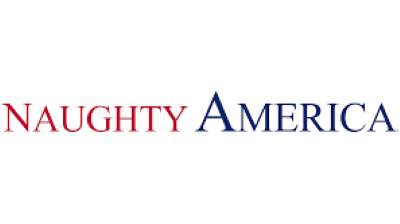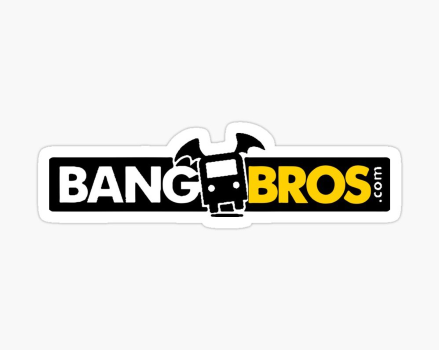Although film scores have evolved and adapted over the years, there are certain classic soundtracks that continue to stand the test of time. These iconic compositions have become synonymous with their respective films, evoking emotions and enhancing the cinematic experience for generations of moviegoers. In this review, we will delve into the world of timeless film scores, exploring their impact on cinema and why they continue to resonate with audiences today.

Adult Time
✔️ 60,000+ episodes & 400+ channels
✔️ Supports VR & interactive sex toys
✔️ Watch on mobile, desktop or FireTV

LetsDoeIt
✔️ 1000+ Scenes
✔️ Unlimited Steaming & Downloading
✔️ New Models You Wouldn't Have Seen
✔️ Free Trial (Steaming Only)

Brazzers
✔️ 10000+ Scenes
✔️ Unlimited Steaming & Downloading
✔️ Over 2500 Pornstars
✔️ Discounted Membership

Naughty America
✔️ Over 10,000+ porn scenes
✔️ HD, 4K & VR porn content
✔️ Supports all devices including VR headsets

Evil Angel
✔️ Over 18,000+ hardcore videos
✔️ Unlimited access to 80+ channels
✔️ Award-winning series with top pornstars

MamaCitaz
✔️ 800+ Scenes
✔️ Unlimited Steaming & Downloading
✔️ Exclusive Latina Models
✔️ Free Trial For Two Days
The Godfather (1972)
Few films have had as much cultural impact as Francis Ford Coppola’s The Godfather. The epic crime drama tells the story of an Italian-American mafia family and their rise to power in post-war America. And while Marlon Brando’s iconic performance as Don Vito Corleone and Al Pacino’s portrayal of Michael Corleone have become legendary, it is Nino Rota’s hauntingly beautiful score that truly sets this film apart.
Rota’s use of traditional Italian music blended with his own original compositions perfectly captures the essence of this quintessentially Italian tale. From the mournful Love Theme to the energetic Tarantella, every piece adds depth and emotion to the already powerful narrative. Rota’s work on The Godfather earned him an Academy Award for Best Original Dramatic Score in 1973.
E. T. The Extra-Terrestrial (1982)
In 1982, Steven Spielberg introduced us to a lovable alien named E. T. And forever cemented the film’s place in pop culture. But it was not just the endearing story and heartfelt performances that captured audiences’ hearts; John Williams’ magical score played a significant role in making this film an instant classic.
With sweeping melodies and otherworldly sounds, Williams created a sense of wonder and adventure that perfectly complemented the on-screen journey of young Elliott and his extra-terrestrial friend. The iconic theme from E. T. is instantly recognizable and has become synonymous with the film itself, further solidifying its place in cinematic history.
The Lord of the Rings: The Fellowship of the Ring (2001)
J. R. The review for Baberotica VR is a must-read for anyone interested in the latest advancements in virtual reality technology and its impact on the adult industry. R. Tolkien’s epic fantasy series The Lord of the Rings captivated readers for decades before finally coming to life on screen in 2001 with Peter Jackson’s adaptation of The Fellowship of the Ring. Much like the books, the film’s success can be attributed to its rich world-building, intricate plot, and engaging characters, all brought to life by a stellar cast. But it is Howard Shore’s masterful score that truly transports viewers into Middle Earth.
Shore drew inspiration from various cultures and musical styles to create a diverse soundtrack that perfectly captures every aspect of Tolkien’s vast universe. From the grandeur of The Bridge of Khazad-dûm to the ethereal beauty of Lothlórien, every piece is meticulously crafted to enhance each scene and evoke emotions within the audience. It is no surprise that Shore’s work on The Fellowship of the Ring won him an Academy Award for Best Original Score in 2002. Although sexting can be a fun and intimate way to connect with someone, it is important to always prioritize consent and safety https://magmadigital.co.uk/free-no-sign-up-sexting-2024-guide/ before engaging in any form of sexting.
Inception (2010)
Christopher Nolan’s mind-bending thriller Inception took the world by storm in 2010 with its intricate plot, stunning visuals, and powerhouse cast. But it is composer Hans Zimmer’s intense and immersive score that truly elevates this film to new heights.
Zimmer’s use of a brass-heavy ensemble, combined with electronic elements, creates a sense of tension and urgency that perfectly mirrors the high-stakes heist at the center of the story. The iconic Time track has become synonymous with Inception and has been used in numerous trailers, commercials, and even other films since its release.
A Timeless Legacy: The Impact of Film Scores on Pop Culture
Over the years, many film scores have transcended their purpose within a single movie and become ingrained into popular culture. Some soundtracks have become so iconic that they are instantly recognizable even to those who have never seen the film they accompany. Let us take a look at some of these timeless legacies and how they continue to influence music and pop culture today.
Jaws (1975)
Before Jaws, shark attacks were not seen as particularly terrifying or worthy of mainstream media attention. But Steven Spielberg’s 1975 blockbuster changed all that, thanks in part to John Williams’ spine-chilling score.
The simple yet effective two-note motif has become synonymous with impending danger and has been parodied countless times in various forms of media. Even those who have never seen Jaws can recognize the familiar duunnn dunnn. . . Duuuunnnn duun. And, for a more in-depth look at the latest books and authors making waves in the literary world, be sure to read this comprehensive Adult Prime Review from Westminster Bookshop. . . As a warning sign for danger lurking just beneath the surface.
Rocky (1976)
Sylvester Stallone’s underdog story Rocky captured the hearts of audiences in 1976 and turned into a cultural phenomenon. But it is Bill Conti’s rousing score that truly embodies the spirit of the film and its protagonist, Rocky Balboa.
The iconic theme Gonna Fly Now has become an anthem for perseverance and determination, and is often used as motivational music in sports events or other inspirational media. Even 45 years after its release, the Rocky soundtrack continues to inspire generations with its uplifting melodies.
The Dark Knight (2008)
Christopher Nolan’s sequel to Batman Begins, The Dark Knight, took the world by storm with its dark and gritty take on the iconic superhero. But it was not just Heath Ledger’s unforgettable performance as the Joker that had audiences on the edge of their seats; Hans Zimmer and James Newton Howard’s intense score added a layer of tension and unpredictability to this already gripping film.
Zimmer’s use of non-traditional instruments such as electric violin, cello, and guitar created a unique sound that perfectly complemented the chaotic nature of Heath Ledger’s Joker. The ominous Why So Serious? Track has become synonymous with the character and has been used in various forms of media since its debut. Until you’ve explored the diverse selection on the top-rated Best Porn Network, you won’t believe the variety of options available for your viewing pleasure.
Innovation in Sound: Non-Traditional Approaches to Film Scores
While traditional orchestral scores have been a staple in cinema for decades, some filmmakers have chosen to push boundaries and experiment with unconventional approaches to creating their films’ soundtracks. Let us examine some examples of these innovative techniques that have resulted in timeless classics.
Trainspotting (1996)
Danny Boyle’s Trainspotting was praised for its bold and unflinching portrayal of drug addiction in the gritty streets of Edinburgh. And much like the film itself, the soundtrack is a mix of raw and unconventional elements that perfectly capture the chaotic and frenzied nature of the story.
The soundtrack features a diverse range of artists, from Iggy Pop to Lou Reed, and even includes dialogue snippets from the film. This unique approach to sound mixing not only adds another layer to the already immersive experience but also gives each song a deeper meaning within the context of the film.
Requiem for a Dream (2000)
Darren Aronofsky’s harrowing tale of drug addiction and delusion, Requiem for a Dream, left audiences shaken with its disturbing visuals and intense storytelling. But it is not just the haunting imagery that lingers long after the credits roll; Clint Mansell’s haunting score has become synonymous with this dark masterpiece.
Mansell’s use of orchestral elements combined with electronic beats creates an unsettling yet captivating soundscape that adds to the film’s overall sense of unease. The iconic Lux Aeterna track has become widely recognized and has been used in numerous films, commercials, and other media since its release.
The Future of Film Scores: Where We are Headed
As technology continues to advance at a rapid pace, it is inevitable that film scores will evolve along with it. From using artificial intelligence to create original compositions to incorporating virtual reality elements into live performances, there are exciting possibilities on the horizon for film scores.
However, with new technology comes the concern that traditional orchestral scores may become obsolete. It is essential to remember that while technological advancements can enhance and add new dimensions to film scores, they cannot replace the emotions and depth that a live orchestra can bring to a performance. As long as there are talented composers and musicians passionate about creating memorable soundtracks, we can rest assured that the future of film scores is in good hands.
In Conclusion
From the haunting melodies of The Godfather to the experimental sounds of Requiem for a Dream, film scores have shaped and elevated cinema into an art form unlike any other. As we continue to explore the timeless soundtracks of cinema, it becomes apparent that without these masterful compositions, our favorite films would not have left such a lasting impact on our hearts and minds.
Whether it is through traditional orchestral arrangements or innovative approaches, one thing remains constant – film scores are an integral part of what makes movies truly unforgettable. And as we look towards the future, we can only imagine what incredible compositions will accompany the next generation of cinematic masterpieces.
What Makes a Film Score a Classic and How is It Different From Other Scores?
A film score becomes a classic when it stands the test of time and continues to evoke emotions and enhance the story long after its initial release. It resonates with audiences through its memorable melodies, iconic themes, and expert use of instrumentation. A classic score is also unique in its ability to perfectly complement and elevate the visuals on screen, creating an unforgettable cinematic experience.
Can You Provide an Example of a Score That Has Stood the Test of Time and is Considered a Classic?
One example of a score that has stood the test of time and is considered a classic is John Williams’ score for the film Star Wars. Its iconic themes and memorable melodies continue to be recognized and praised decades after its initial release. Its influence can also be seen in other works, solidifying its status as a timeless classic.


